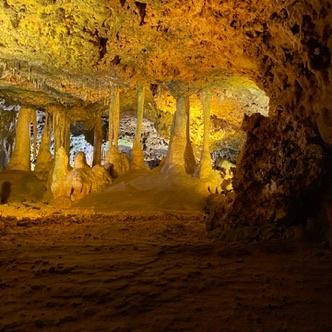What unique geological formations can travelers visit in Mallorca, and what makes them special?
Similar Topics
mallorca geological formations
serra de tramuntana
limestone cliffs
karst landscapes
caves of drach
lake martel
torrent de pareis
sa calobra beach
Mallorca, the largest of Spain’s Balearic Islands, offers travelers a rich array of unique geological formations that highlight its diverse natural beauty. One of the most remarkable features is the Serra de Tramuntana mountain range, a UNESCO World Heritage site renowned for its dramatic limestone cliffs and rugged peaks that rise sharply from the Mediterranean Sea. These ancient mountains were formed millions of years ago through complex tectonic movements, and their karst landscapes are characterized by jagged rock faces, deep ravines, and impressive caves, providing a spectacular backdrop for hiking and exploring.
Among the most famous geological attractions within this range are the Caves of Drach, located near the town of Porto Cristo. These caves contain some of the most extensive subterranean formations in Europe, with stalactites and stalagmites that have taken thousands of years to develop. What makes the Caves of Drach particularly special is their enormous underground lake, Lake Martel, which is one of the largest in the world. Visitors can enjoy guided tours that include a classical music performance played on boats floating on the lake, creating a unique sensory experience deeply connected to the island’s natural heritage.
In addition to mountainous and cave formations, Mallorca’s coastline features notable geological structures as well. The Torrent de Pareis, a dramatic gorge carved by water erosion, leads travelers through imposing cliffs towards Sa Calobra beach. This narrow, winding canyon showcases the island’s dynamic geological past, illustrating the powerful forces of erosion and sedimentation at work over millennia. These formations are not only visually striking but also offer insight into the island’s ancient environment, making them an essential destination for travelers interested in geology and natural history.
Among the most famous geological attractions within this range are the Caves of Drach, located near the town of Porto Cristo. These caves contain some of the most extensive subterranean formations in Europe, with stalactites and stalagmites that have taken thousands of years to develop. What makes the Caves of Drach particularly special is their enormous underground lake, Lake Martel, which is one of the largest in the world. Visitors can enjoy guided tours that include a classical music performance played on boats floating on the lake, creating a unique sensory experience deeply connected to the island’s natural heritage.
In addition to mountainous and cave formations, Mallorca’s coastline features notable geological structures as well. The Torrent de Pareis, a dramatic gorge carved by water erosion, leads travelers through imposing cliffs towards Sa Calobra beach. This narrow, winding canyon showcases the island’s dynamic geological past, illustrating the powerful forces of erosion and sedimentation at work over millennia. These formations are not only visually striking but also offer insight into the island’s ancient environment, making them an essential destination for travelers interested in geology and natural history.
🧩 Related Questions
Related Question
Are there any specific regions in Mallorca known for their fruit cultivation?
Related Question
How is Maria del Mar Bonet’s music received by younger generations in Mallorca today?
Related Question
How important is it for newcomers to learn both Spanish and Mallorquín to fully engage in everyday life on the island?
